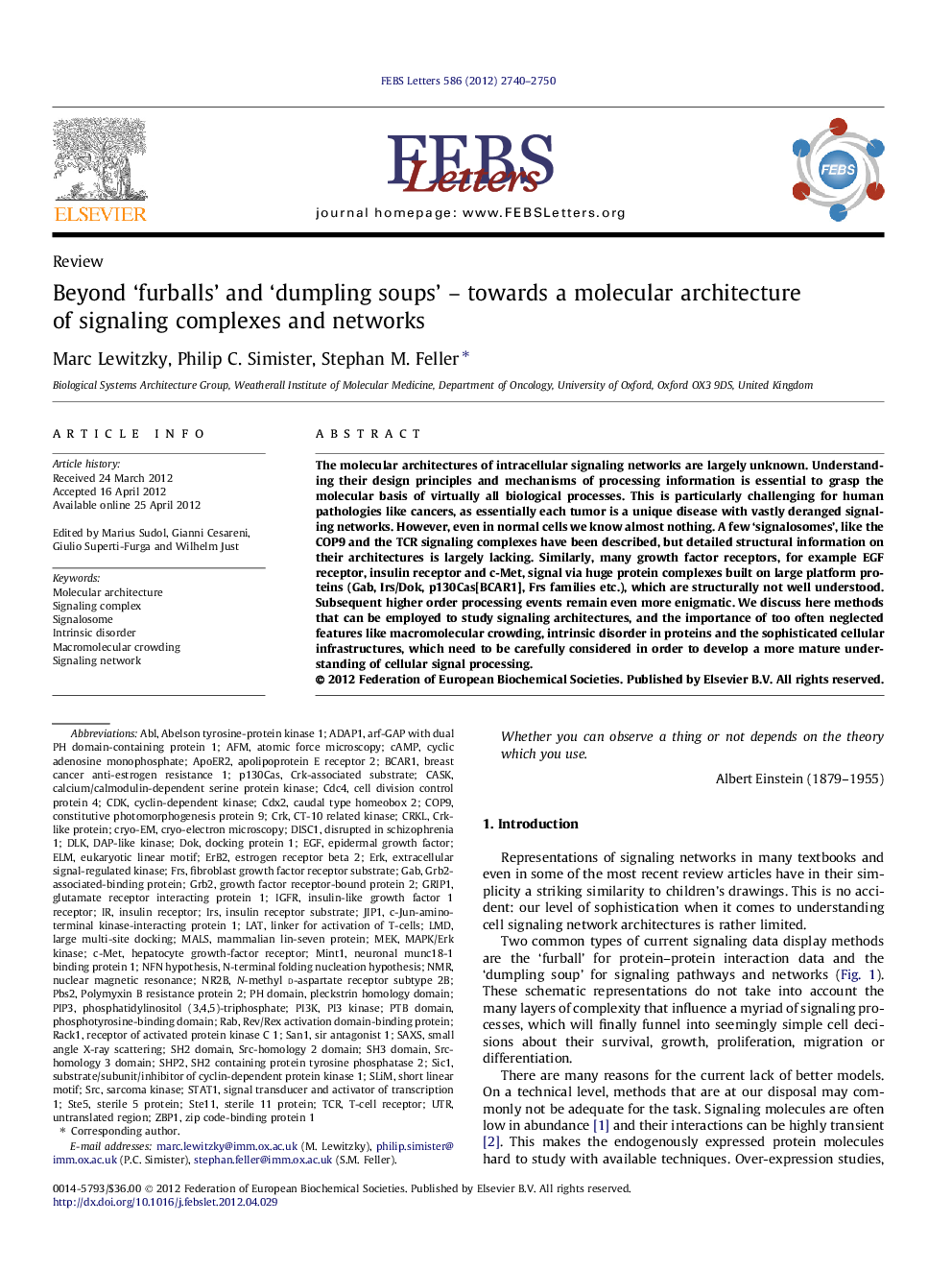| Article ID | Journal | Published Year | Pages | File Type |
|---|---|---|---|---|
| 10871656 | FEBS Letters | 2012 | 11 Pages |
Abstract
The molecular architectures of intracellular signaling networks are largely unknown. Understanding their design principles and mechanisms of processing information is essential to grasp the molecular basis of virtually all biological processes. This is particularly challenging for human pathologies like cancers, as essentially each tumor is a unique disease with vastly deranged signaling networks. However, even in normal cells we know almost nothing. A few 'signalosomes', like the COP9 and the TCR signaling complexes have been described, but detailed structural information on their architectures is largely lacking. Similarly, many growth factor receptors, for example EGF receptor, insulin receptor and c-Met, signal via huge protein complexes built on large platform proteins (Gab, Irs/Dok, p130Cas[BCAR1], Frs families etc.), which are structurally not well understood. Subsequent higher order processing events remain even more enigmatic. We discuss here methods that can be employed to study signaling architectures, and the importance of too often neglected features like macromolecular crowding, intrinsic disorder in proteins and the sophisticated cellular infrastructures, which need to be carefully considered in order to develop a more mature understanding of cellular signal processing.
Keywords
DLKglutamate receptor interacting protein 1NR2BFRSCDX2SHP2SAXSCryo-EMCrkCrkLAFMSte11RACK1receptor of activated protein kinase C 1PIP3UTRSignalosomeGRB2Ste5ApoER2PBS2PTB domainBcar1Short linear motifGRIP1JIP1Sic1CDC4Zbp1LMDTCrERKSRCGABEGFIRSlinker for activation of T-cellsABLcaudal type homeobox 2DISC1PI3KCOP9CDKnuclear magnetic resonancec-MetcAMPiGFRMAPK/ERK kinasep130CasPI3 kinaseStat1Cyclic adenosine monophosphateDisrupted in Schizophrenia 1Intrinsic disorderMacromolecular crowdingELMinsulin receptor substrateCrk-associated substrateNMRPH domainSH2 domainSH3 domainphosphotyrosine-binding domainPleckstrin homology domainDokRabLATSignaling complexSignaling networkepidermal growth factorphosphatidylinositol (3,4,5)-triphosphateSlimMALSsignal transducer and activator of transcription 1MEKMolecular architectureuntranslated regionCryo-electron microscopyatomic force microscopysmall angle X-ray Scatteringcalcium/calmodulin-dependent serine protein kinasegrowth factor receptor-bound protein 2CASKextracellular signal-regulated kinasecyclin-dependent kinaseApolipoprotein E receptor 2insulin receptorinsulin-like growth factor 1 receptorT-cell receptor
Related Topics
Life Sciences
Agricultural and Biological Sciences
Plant Science
Authors
Marc Lewitzky, Philip C. Simister, Stephan M. Feller,
